
Film language
Schede di sintesi - Outlines
 |
Il linguaggio cinematografico Film language Schede di sintesi - Outlines |
|
Tramite il mirino della cinepresa, il mondo esterno attraversa un processo di selezione e organizzazione ... Come il microscopio, l'inquadratura è uno strumento di analisi. Néstor Almendros, cineasta
Campo e fuori campo Il campo è lo spazio (spazio "in") delimitato dai quattro bordi dell'inquadratura e comprende tutto ciò (personaggi, oggetti, ecc.) che viene "messo in scena" e che viene ripreso dalla mdp (1). Come tale, non può mai essere una realtà "oggettiva", poichè è sempre frutto della selezione ed organizzazione intenzionale degli elementi di cui si compone. In altre parole, se definiamo come profilmico tutto ciò che è concretamente situato davanti alla mdp, le soluzioni di linguaggio cinematografico scelte per rappresentarlo traducono il profilmico in filmico. Ad esempio, nell'inquadratura a destra, la scelta degli oggetti, la loro disposizione, la presenza di una porta chiusa, ecc., costituiscono scelte stilistiche che denotano già il significato che si intende costruire. I quattro bordi dell'inquadratura nascondono però la vera natura del campo, che in realtà possiede sei lati, e cioè ciò che è situato - a sinistra - a destra - sotto (ad es. il pavimento) - sopra (ad es. il soffitto) - in profondità - dietro la mdp: questa sesta "dimensione" (2) è stata definita "spazio proibito", in quando nasconde tutto l'apparato tecnico e "umano" che serve per la ripresa. (Tuttavia, violare questo "spazio proibito", mostrando ad esempio il regista o la troupe, corrisponde a precise scelte stilistiche "anti-classiche", come in alcuni film del regista iraniano Abbas Kiarostami). |
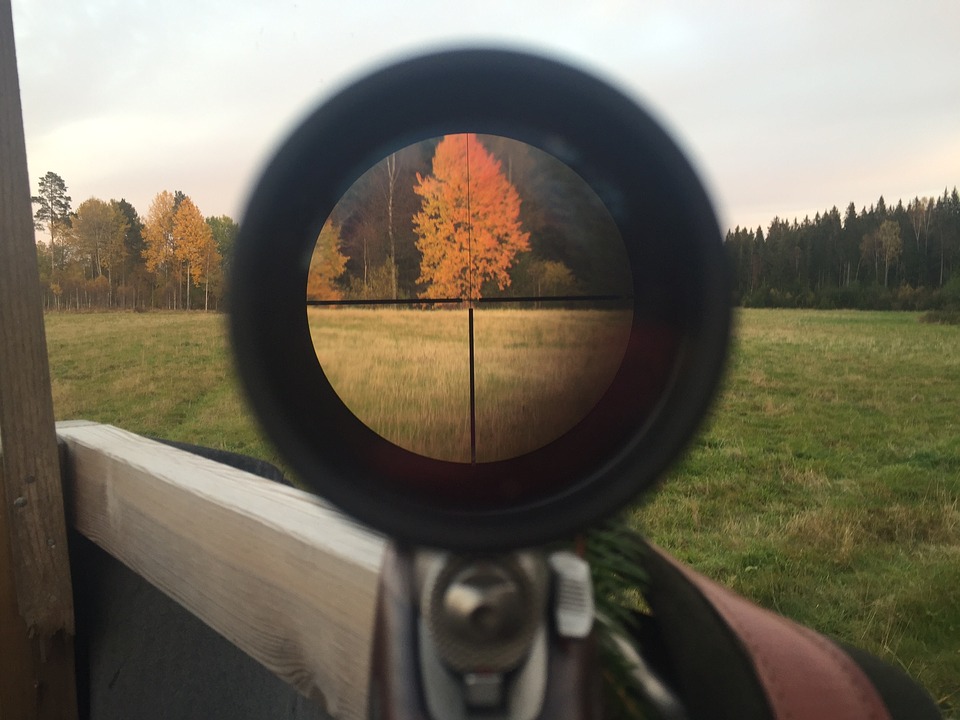 (1) 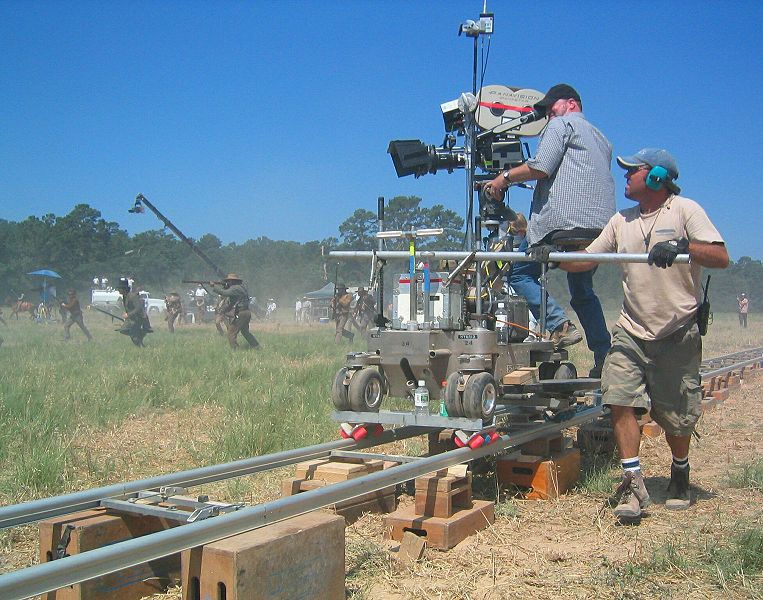 (2) La sesta dimensione: lo spazio "proibito" - sono visibili le "rotaie" su cui scorre il carrello con la mdp The sixth dimension: the "forbidden" space - on the right you can see the rails on which the camera "travels" through space |
By means of the camera’s viewfinder, the outside world goes through a process of selection and organization. . . . Like the microscope, the frame is an analyzing tool. Néstor Almendros,
cinematographe On and off screen The four sides of the frame mark the boundary of on screen space, which includes everything (characters, objects, etc.) that is "staged" to be filmed by the camera (1). As such, it can never be an "objective" reality, since it is the result of the intentional selection and organization of the elements which make it up. In other words, if we define as profilmic all that is situated in front of the camera, specific choices of film language lie behind framing and translate the profilmic into filmic. For example, in the frame shown on the left, the choice of objects, their arrangement in space, the presence of a closed door, etc. are all stylistic choices which give meaning to what is shown. However, the borders of the frame hide the real nature of screen space, which implies six "sides", i.e. what exists - on the left of the frame - on its right - below the frame (e.g. the floor) - above it (e.g. the ceiling) - in depth - behind the camera: this "sixth dimension" (2) has been defined as "forbidden space", since it conceals all the technical and "human" equipment which is necessary for shooting. (however, violating this "forbidden space", by showing e.g. the director or her/his technicians, hints at definite, "anti-classical" stylistic choices, as in some films by the Iranian director Abbas Kiarostami). |
|
Se il campo è ciò che lo spettatore vede, il fuori campo (spazio
off) è tutto ciò che può essere inferito come appartenente
al mondo rappresentato, anche se nell'inquadratura non è visibile (ma
può magari essere mostrato in seguito). Ad esempio, oltre la porta dell'inquadratura
(1) possiamo dedurre che esista un altro locale.
L'apertura della porta nell' inquadratura (3) permette di
"mettere in campo" ciò che prima era celato dalla porta chiusa. Si parla così di fuori campo cataforico, per indicare ciò che non è ancora mostrato e che potrebbe restare immaginario, e di fuori campo anaforico, per indicare ciò che è stato già mostrato in precedenza e che ha quindi carattere concreto. |
(3) |
If the on screen space is what
the spectator sees, the off screen space is everything
that can be inferred as belongin to the staged world, even
though it is not visible in the frame (but may be shown later). For
example, beyond the door shown in frame (1) we can infer the
existence of another room. The open door in frame (3) allows to
"put on stage" what was concealed by the closed door. Off screen space can thus be cataphoric, relating to what hasn't been shown yet (and may as well remain imaginary), and anaphoric, relating to what has already been shown and has therefore a concrete character. |
Dal punto di vista spaziale, il fuori campo svolge lo stesso ruolo che l'ellissi svolge sul piano temporale: in entrambi i casi viene omesso qualcosa, che lo spettatore generalmente può inferire sulla base delle sue conoscenze pregresse dei luoghi, delle situazioni, dei contesti, ecc. Campo e fuori campo sono in un rapporto continuo: non solo lo spettatore inferisce ciò che non vede, ma le entrate in campo dei personaggi (e le corrispondenti uscite di campo), i raccordi tra gli sguardi, i gesti, i dialoghi costituiscono una presenza costante, anche se non esplicitata, dello "spazio off". Ad esempio, nei fotogrammi sulla destra l'uomo esce dal campo da destra (4) ed entra in un nuovo campo da sinistra (5). La donna lo segue allo stesso modo, uscendo dal campo da destra (6) ed entrando nel nuovo campo da sinistra (7). Naturalmente, celare allo sguardo dello spettatore un fuori campo a cui allude, ad esempio, lo sguardo preoccupato, ansioso o atterrito di un personaggio, costituisce uno degli elementi ricorrenti del cinema thriller o horror. Nascondere è, insomma, almeno tanto importante quanto mostrare. Il fuori campo comprende ovviamente anche i suoni (parole, rumori, musica), che provengono dallo "spazio off" e che facciano parte del mondo raccontato dal film (la cosiddetta diegesi). A ciò si contrappongono i suoni non diegetici, come la musica di sottofondo o colonna sonora, cioè quelli destinati ad accompagnare alcune sequenze, stimolando o acuendo le emozioni degli spettatori, e che i personaggi del mondo diegetico non possono sentire. (Si veda lo Schema Suono) |
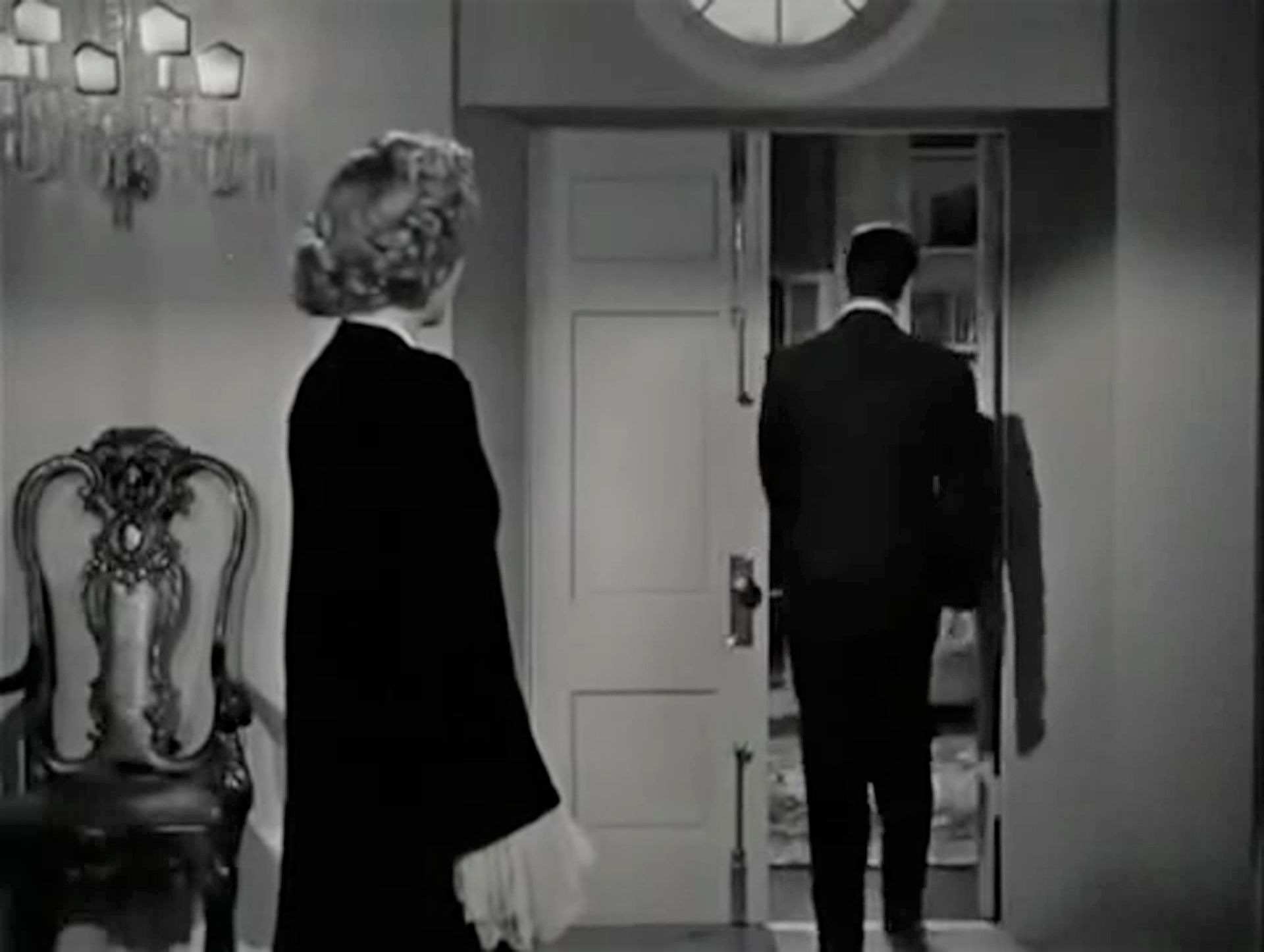 (4) 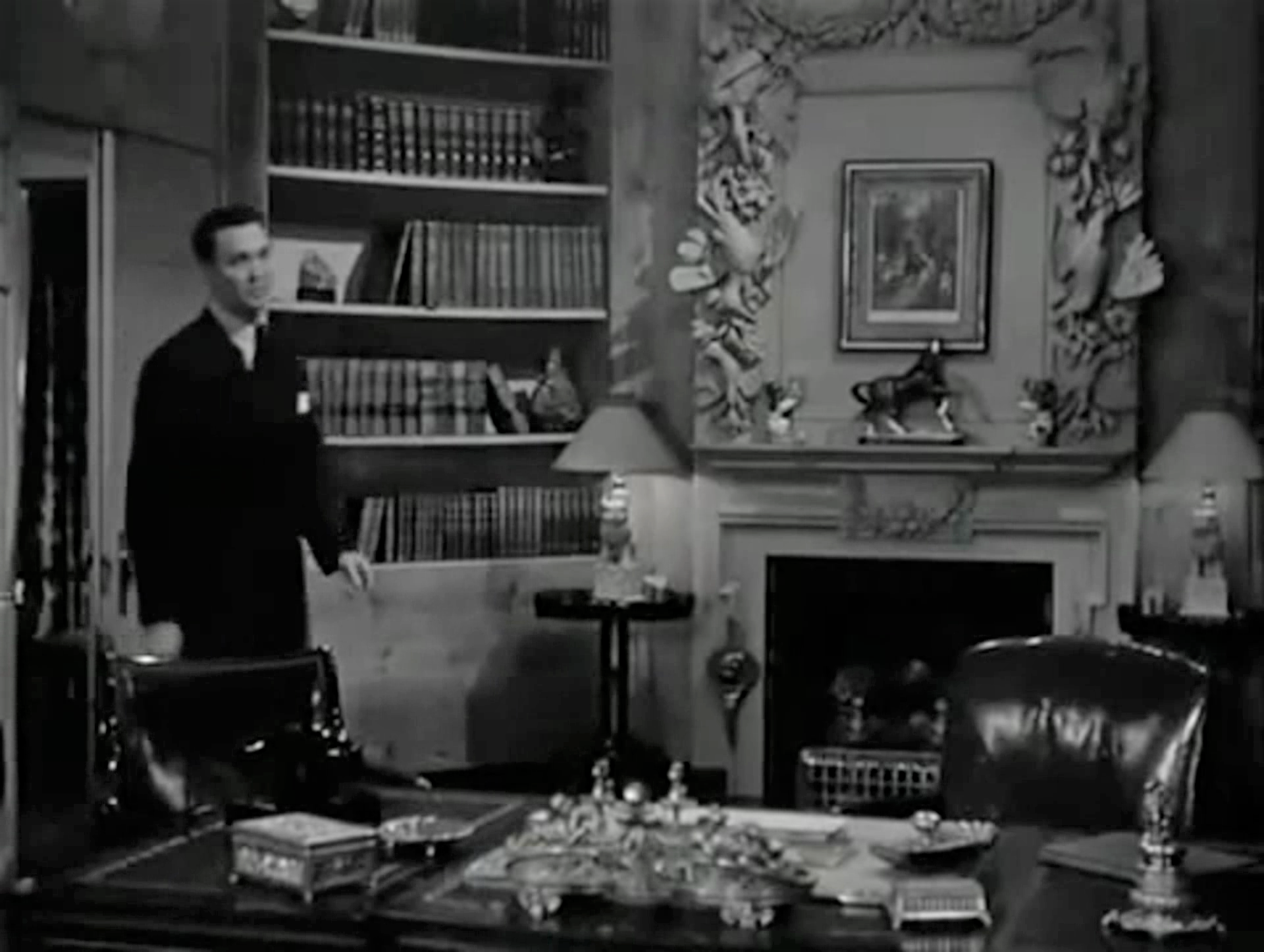 (5) 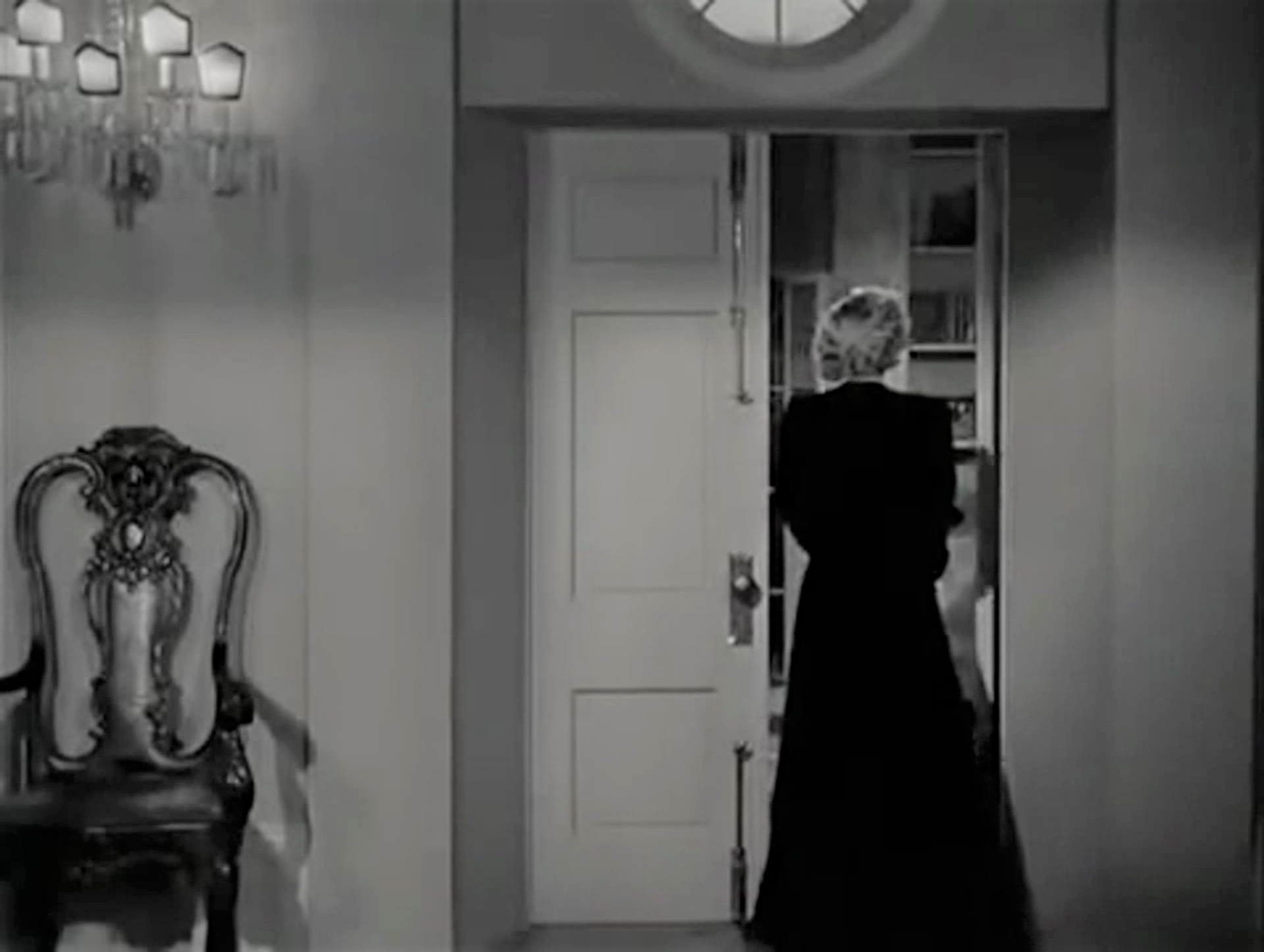 (6) 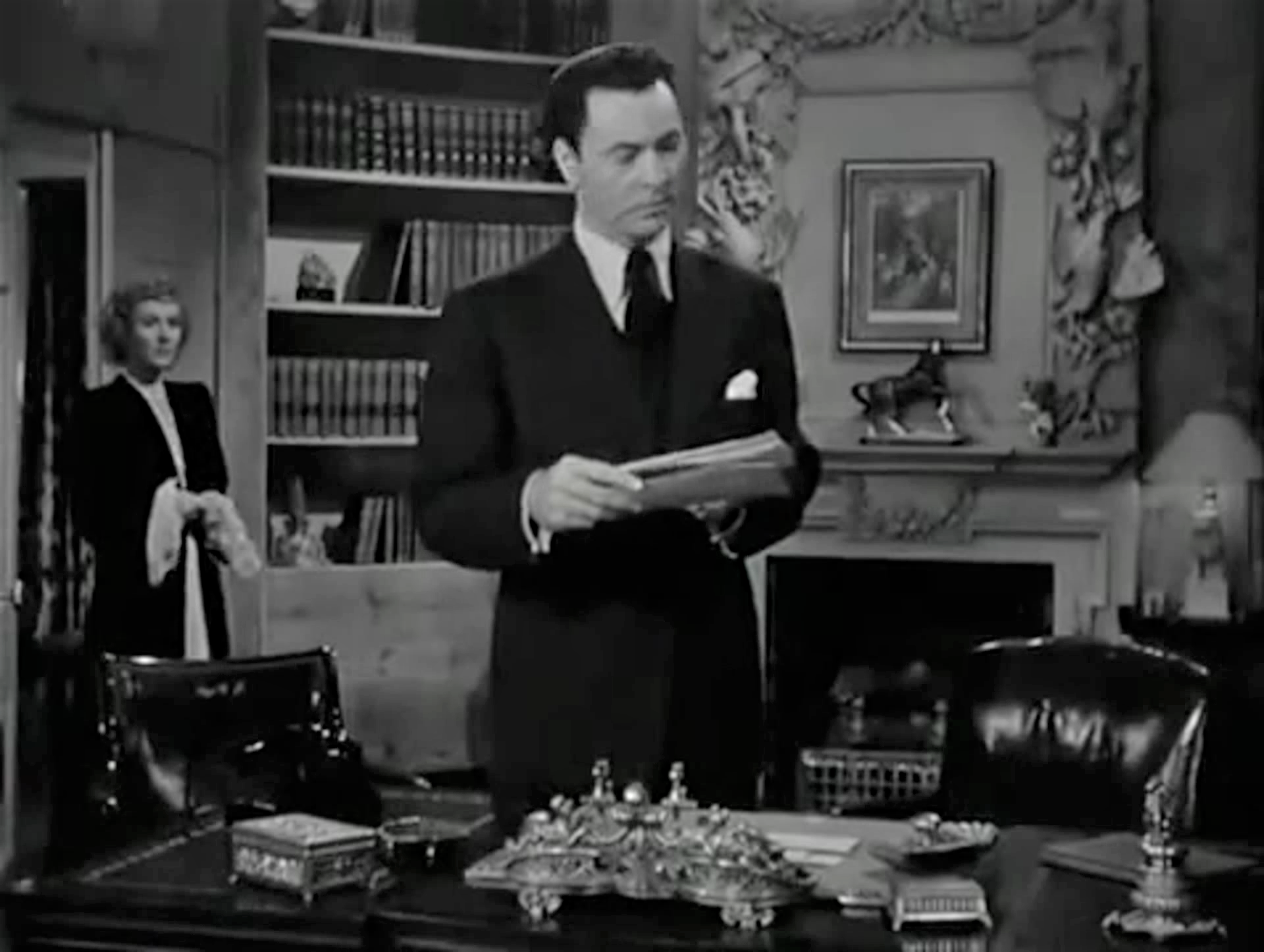 (7) Da/From Il Cerchio si chiude (Framed), di/by Richard Wallace, USA 1947. |
From a spatial viepoint, off screen space plays the same role as does ellipsis from a temporal viewpoint: in both cases something is omitted - something which spectators can usually infer on the basis of their previous knowledge of places, situations, contexts, etc. On and off screen spaces are in constant relationship: not only does the spectator infer what s/he cannot see, but characters entering the on screen space (and leaving it), eye matches, gestures and dialogues remind us of the constant, if not explicit, presence of an off screen space. For example, in the shots shown on the left, the man leaves the on screen space from the right (4) and enters a new on screen space from the left (5). The woman follows him in the same way: she exits from the right (6) and enters from the left (7). Obviously, having a character look at an off screen space with a worried, anxious or frightened look, but concealing that space from our view, adds to the excitement of the scene, as in many thriller or horror films. Hiding something or somebody, in other words, is at least as important as showing them. The off screen space includes sounds (words, noises, music) originating in the off space and belonging to the world of the film (the so-called diegesis). Non-diegetic sound, on the other hand, like background music from the film score (which the characters cannot hear), is used as a way of stimulating or sharpening the spectators' emotions. (See the Outline Sound) |
 |
Per
saperne di più ... * Dal sito Cinema e Scuola: - Campo e fuori campo * Dal sito dell'Enciclopedia del Cinema Treccani: - Fuori campo * Dal sito Thomas graziani visuals: - In campo e fuori campo: l'inquadratura dinamica * Dal sito Cinefilos.it: - Il paradosso del fuori campo |
 |
Want to know more? * From Phil Brown's YouTube Channel: - On Screen/Off Screen Spaces * - Off-screen: the liminal dimension of the cinematic image - an excerpt from Dalpozzo C. 2012. Fuori campo. Dentro e oltre l'immagine cinematografica. libreriauniversitaria.it, Padova |
